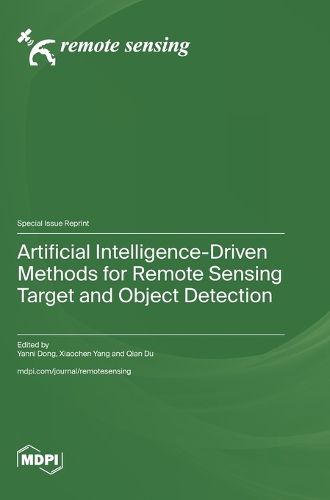Readings Newsletter
Become a Readings Member to make your shopping experience even easier.
Sign in or sign up for free!
You’re not far away from qualifying for FREE standard shipping within Australia
You’ve qualified for FREE standard shipping within Australia
The cart is loading…






The aim of this reprint is to provide readers with an in-depth understanding of state-of-the-art technical approaches related to remote sensing target detection and object detection. Remote sensing target detection or object detection determines the presence of a target or object of interest in a remote sensing image, playing a decisive role in the fields of resource detection, environmental monitoring, national security, etc. In recent years, artificial intelligence (AI) has made great progress and been successfully applied to regression, clustering, classification and many other fields. Although AI-driven approaches can handle massive quantities of data acquired by remote sensors, they require many high-quality labeled samples to deal with remote sensing big data, leading to fragile results. That is, AI-driven approaches with strong ability for feature extraction have limited performance and are still far from practical demands. Thus, target detection or object detection in the presence of a complicated background with limited labeled samples remains a challenging mission. In this reprint, leading experts in the field share their insights, latest research results, and perspectives for the future.
$9.00 standard shipping within Australia
FREE standard shipping within Australia for orders over $100.00
Express & International shipping calculated at checkout
The aim of this reprint is to provide readers with an in-depth understanding of state-of-the-art technical approaches related to remote sensing target detection and object detection. Remote sensing target detection or object detection determines the presence of a target or object of interest in a remote sensing image, playing a decisive role in the fields of resource detection, environmental monitoring, national security, etc. In recent years, artificial intelligence (AI) has made great progress and been successfully applied to regression, clustering, classification and many other fields. Although AI-driven approaches can handle massive quantities of data acquired by remote sensors, they require many high-quality labeled samples to deal with remote sensing big data, leading to fragile results. That is, AI-driven approaches with strong ability for feature extraction have limited performance and are still far from practical demands. Thus, target detection or object detection in the presence of a complicated background with limited labeled samples remains a challenging mission. In this reprint, leading experts in the field share their insights, latest research results, and perspectives for the future.